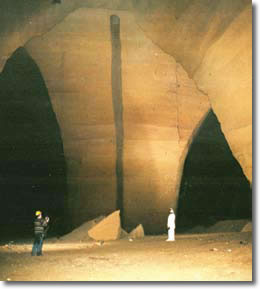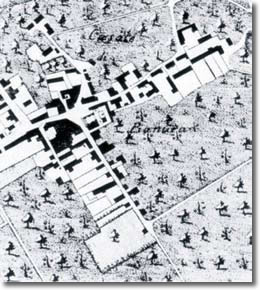
- Cavity of Yellow Neapolitan Tufo in via Nicolardi
Piperno
Another kind of volcanic formation, much older than Yellow Neapolitan Tufo, is to be found in the Phlegraean Fields. This is the piperno of Soccavo and Pianura, a unique rock that is not found elsewhere in the world. The urban history of Soccavo and Pianura, municipalities situated at the foot of the Camaldoli hill, is closely linked to the concept of the hamlet as an early grouping of rural dwellings (De Seta, 1984). They were situated along Via Puteoli-Neapolis,on the hill, just beyond Via Antiniana. The Map of the Dukedom of Noja in 1775 shows the first signs of the hamlets of Soccavo and Pianura, which remained socially and culturally autonomous until 1926-27 when, with urban reform, they were annexed to the city of Naples.
These two hamlets were noted not only for their mainly agricultural economy, but above all because it was here that the piperno masters began to appear, a fact which gave an impulse to the extraction process at the end of the 15th century, when the city walls of Naples were rebuilt.
The piperno of Pianura began to be quarried in 1250, when it is likely that a more permanently settlement began to be established around the activity of piperno extraction (Coleterra et al., 2003). Quarrying ceased in Pianura after World War II. What is sure is that piperno, as a building and ornamental material for the architecture of Naples, played a pre-eminent role.
